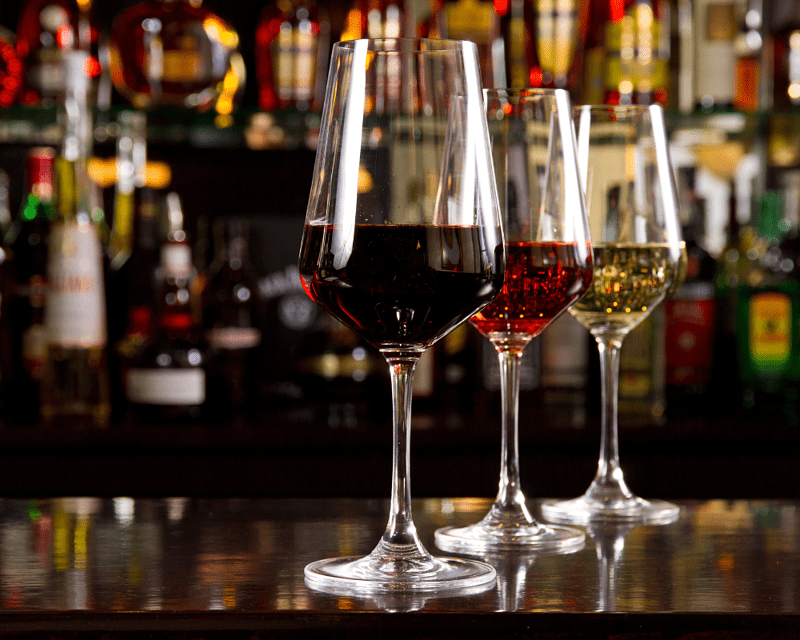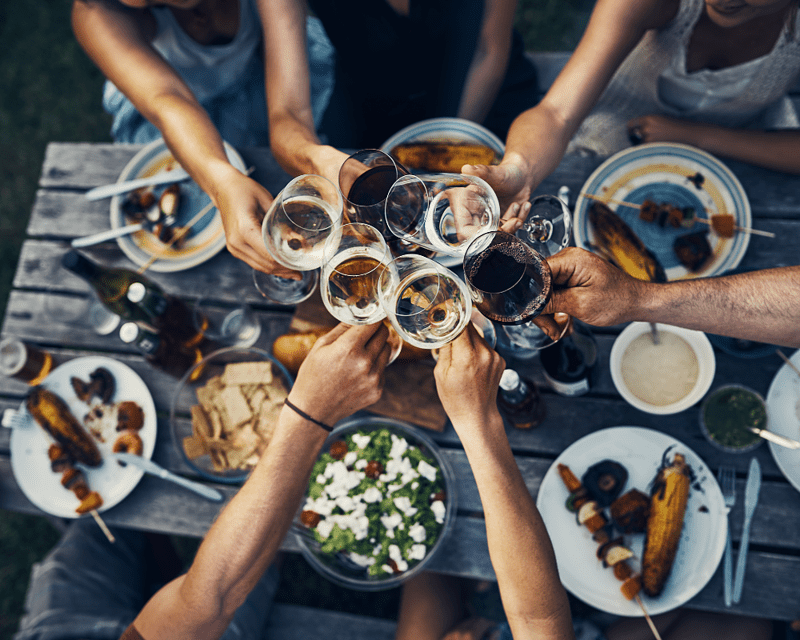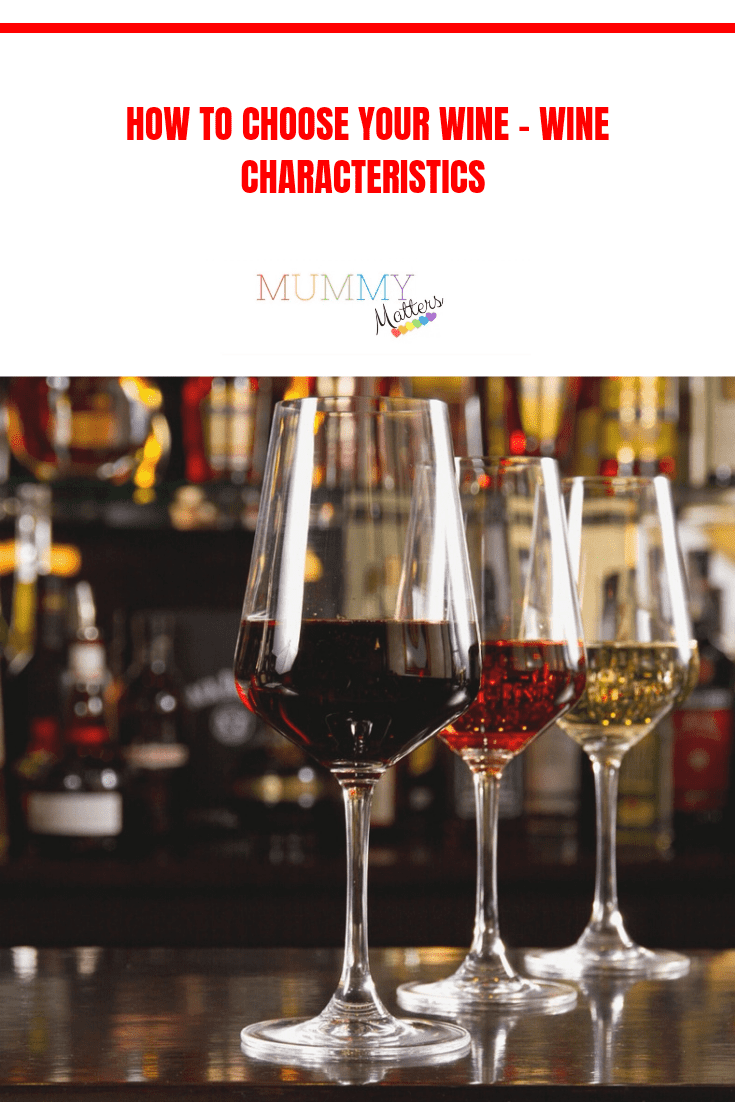Choosing the right wine can be daunting, especially when you’re new to the world of vino. You may feel overwhelmed by all the different types of wines and the wide variety. However, it doesn’t have to be such an arduous process – understanding some of the essential wine characteristics of wine can help simplify matters. Knowing what types of grapes are used in production and their flavour profiles will make selecting a great bottle or two much more accessible.
What is Wine?

Wine is an alcoholic beverage made from grapes and other fruits. It has a long history, with evidence of its consumption dating back to 6000 B.C. Wine is produced through fermentation, which requires yeast’s conversion of sugar in grape juice into alcohol and carbon dioxide. The combination of sugars, acids, minerals and alcohol in wine results in a unique flavour profile that varies depending on the type of grape used and the winemaking process employed.
Wines are usually separated into two main categories: reds and whites. Red wines are typically produced from darker-skinned grapes, while white wines use lighter-skinned varieties or those with no skin. Wines can also be classified by region or country – for example, French wines such as Champagne or Bordeaux may be labelled accordingly due to their distinct area of origin.
Varietal: Grapes and Types
Grapes are the star of the show when it comes to making wine. With thousands of varieties, there’s a grape for every type of wine. Different types of grapes, from light and fruity to full-bodied and tannic, produce distinct qualities in wines.
Chardonnay, Cabernet Sauvignon, Merlot, and Pinot Noir are the four main varietals. Chardonnay is a white grape that produces a crisp dryness with subtle fruit flavours like apple or lemon. Cab Sauvignon is a red grape with intense black currant aromas and dark chocolate notes on the palate. Merlot has soft tannins that lend themselves to bright raspberry aromas and smooth plum characters in the glass.
Colour: Red Wine, White Wine and Rose

Wine has been a part of our culture for centuries, and millions worldwide enjoy it. But what makes the wine unique is its range of colours – Red, White and Rose. Each colour brings unique characteristics to the table, and each variety has something different.
Red wine is known for its bold flavours and aromas, ranging from fruity cherries to earthy mushrooms. The deep red hue of this type of wine is due to the skin being left on during fermentation, giving it a complex taste profile that can be enjoyed with a wide variety of foods.
White wines are slightly sweeter than red wines and tend to have more floral aromas like apples or peaches.
Aroma: Fruity, Earthy, Floral
Aroma is an integral part of the tasting experience when it comes to wine. From fruity to earthy and to floral, these fragrances uniquely affect each individual’s palate. When selecting, many look for particular aromas in their favourite wines and often focus on these scents.
When trying any wine, it is essential to take note of the different aromas that make up its bouquet. Fruity messages can include citrus, peach, or apple; earthy undertones might be reminiscent of tobacco or wet soil; and floral hints such as lavender or rose can also appear in particular wines. Each aroma has a distinct character that determines how enjoyable a specific bottle may be.
Complexity: Taste Profile
When it comes to wine, complexity is critical. Wine experts and connoisseurs search for the complexity of flavours from a bottle of vino. Different wines have unique tastes and profiles, but some remain more complex than others.
Different wines can provide a complex taste profile from dry to sweet, light-bodied to full-bodied. Red wines such as Cabernet Sauvignon or Merlot tend to be more full-bodied with a strong tannin structure, while whites like Chardonnay or Sauvignon Blanc can offer a crispness in the finish. The complexity of each type of grape variety can add an extra layer of flavour that will differentiate one bottle from the next.
Age: Drinking Now or Later?

Wine is a popular alcoholic beverage whose age can be a source of debate. Some experts argue that wine should be drunk as soon as possible to preserve its unique flavours and aromas, while others recommend letting it sit for long periods. Deciding when to drink wine depends on the type of grapes used to make the bottle.
Light-bodied white wines like Sauvignon Blanc are best consumed within a few years of bottling, while Chardonnay can benefit from an ageing process lasting up to five years or more. For those who prefer reds, Pinot Noir should be enjoyed within three years, while Cabernet Sauvignon has the potential for cellaring for up to 20 years or more.
Drinking wine too early can sometimes mean missing out on extra depth and complexity that develops through ageing.
Wine Tasting
Wine tasting is a centuries-old tradition dedicated to the appreciation of fine wines, and it remains popular today. It can be an exciting experience for the novice or connoisseur alike. It is all about exploring the nuances in flavour from various wines. Every region has unique characteristics regarding winemaking, and tasting allows people to explore those regional flavours.
It’s also an opportunity for people to learn more about their favourite grape varieties and discover new ones they may not have tried before. With so many different styles of wine available, there’s always something new to try. The best part is that you don’t need any special knowledge or expertise – bring your enthusiasm and willingness to try different types of wine!
Pairing: Food & Wine Matching

Pairing food and wine properly is a skill that can make any meal genuinely memorable. Wine has long been known as the perfect accompaniment to many dishes, from cheese platters to hearty main courses. Knowing which wines pair well with different types of food will transform your dining experience into something extraordinary.
To achieve the perfect pairing, you need to understand both components of the equation: the wine and the food. When shopping for a bottle of wine, take note of its flavour profile; look for hints of oak or fruit, along with its body weight (whether it’s light, medium or full-bodied). Then select ingredients that will complement those flavours in your dish. For example, if you have chosen a light-bodied white such as Sauvignon Blanc, opt for seafood dishes such as grilled shrimp or fish tacos.
Conclusion: Enjoy Your Selection
In conclusion, choosing the right wine can be intimidating, but with a bit of knowledge; it can be a fun and rewarding experience. Consider the occasion, food pairings, your personal preferences and the characteristics of different types of wine to find the perfect bottle for you. Investigate regions and grape varieties to find something that stands out. Ask questions at your local store or restaurant to get recommendations tailored to your needs. Finally, don’t forget to taste as many wines as possible!

